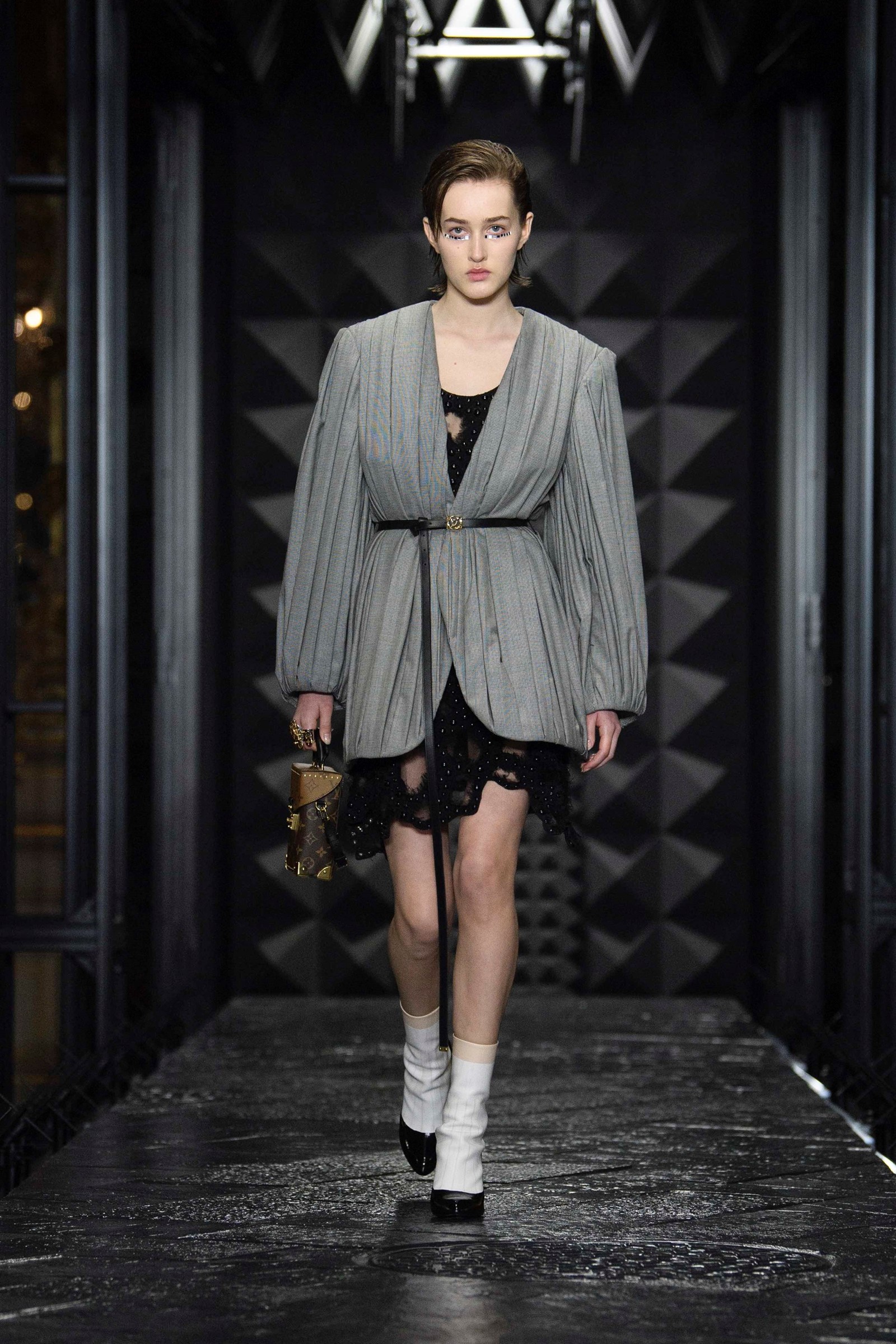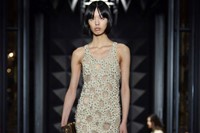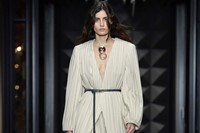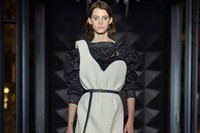Louis Vuitton is one of the most quintessentially French labels operating in Paris today – its legacy is beat out only by Hermès (founded in 1837, Vuitton in 1854) in terms of longevity, but Monsieur Vuitton made his name as trunk-packer to the French empress, at a time when such a position was an absolute necessity. And Vuitton has nestled at the heart of the French establishment ever since – under Nicolas Ghesquière’s near-ten-year tenure, its shows have taken place in a pair of the country’s greatest museums: the Louvre and the perhaps lesser known Musée d’Orsay. The Louvre is, of course, the big kahuna, its art roaming the globe and the centuries, but the d’Orsay is more fundamentally French, its holding centred around impressionist and post-impressionist pieces, created while Vuitton was plying his craft too.
So its natural that Ghesquière would unveil his own ode to France and French style in the confines of the latter, its gilded and crystal-swagged ballroom the canvas for an installation by the artist Philippe Parreno. His works often feature music, and his piece for Vuitton included spiked foam like an anechoic chamber, and a soundscape of incidental noises that, somehow, messaged Paris. The clacking of heels of pavements, discombobulating as models didn’t walk by, the sounds of the Seine, and heartbeats. It was the ebb and flow of Paris, encapsulated.
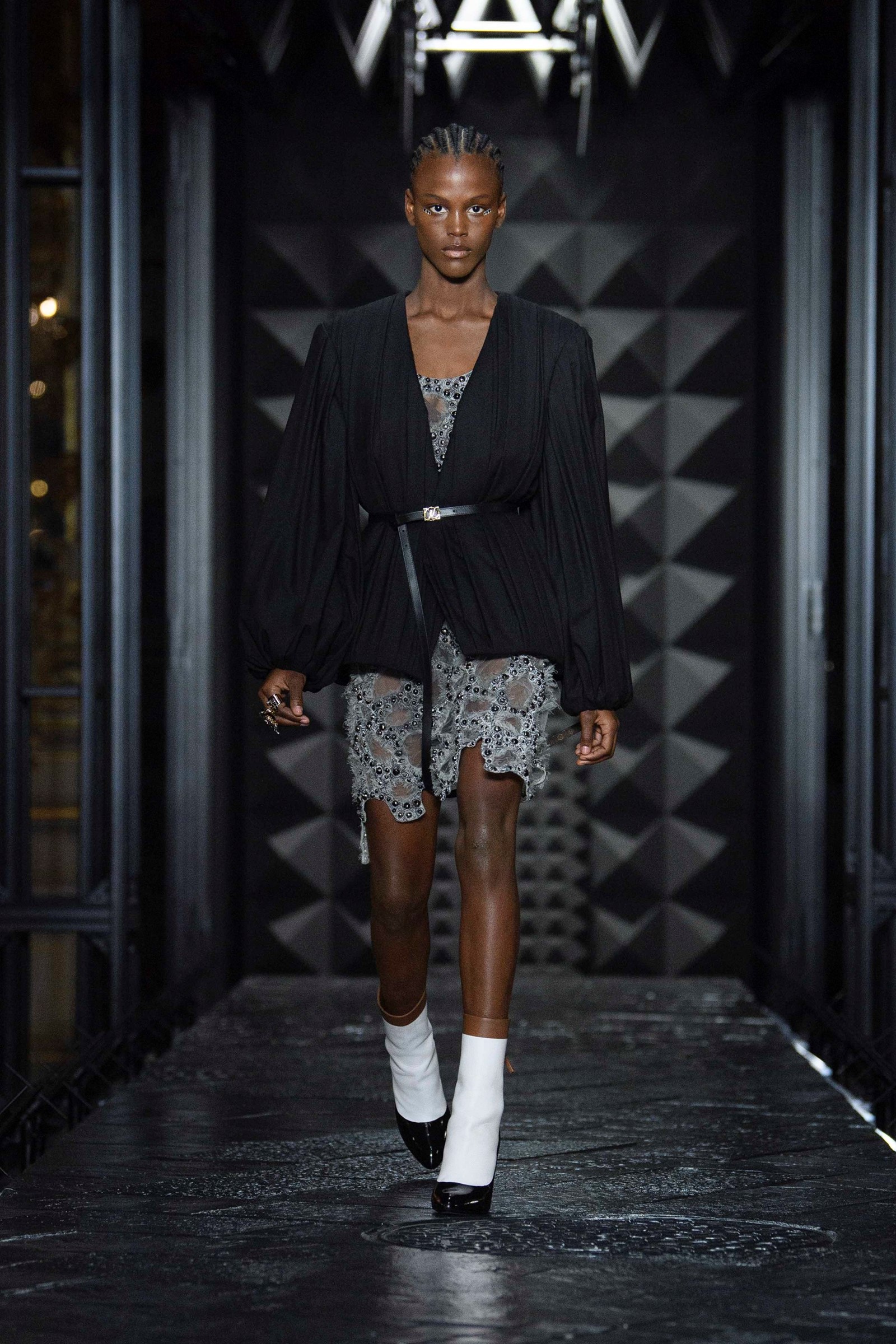
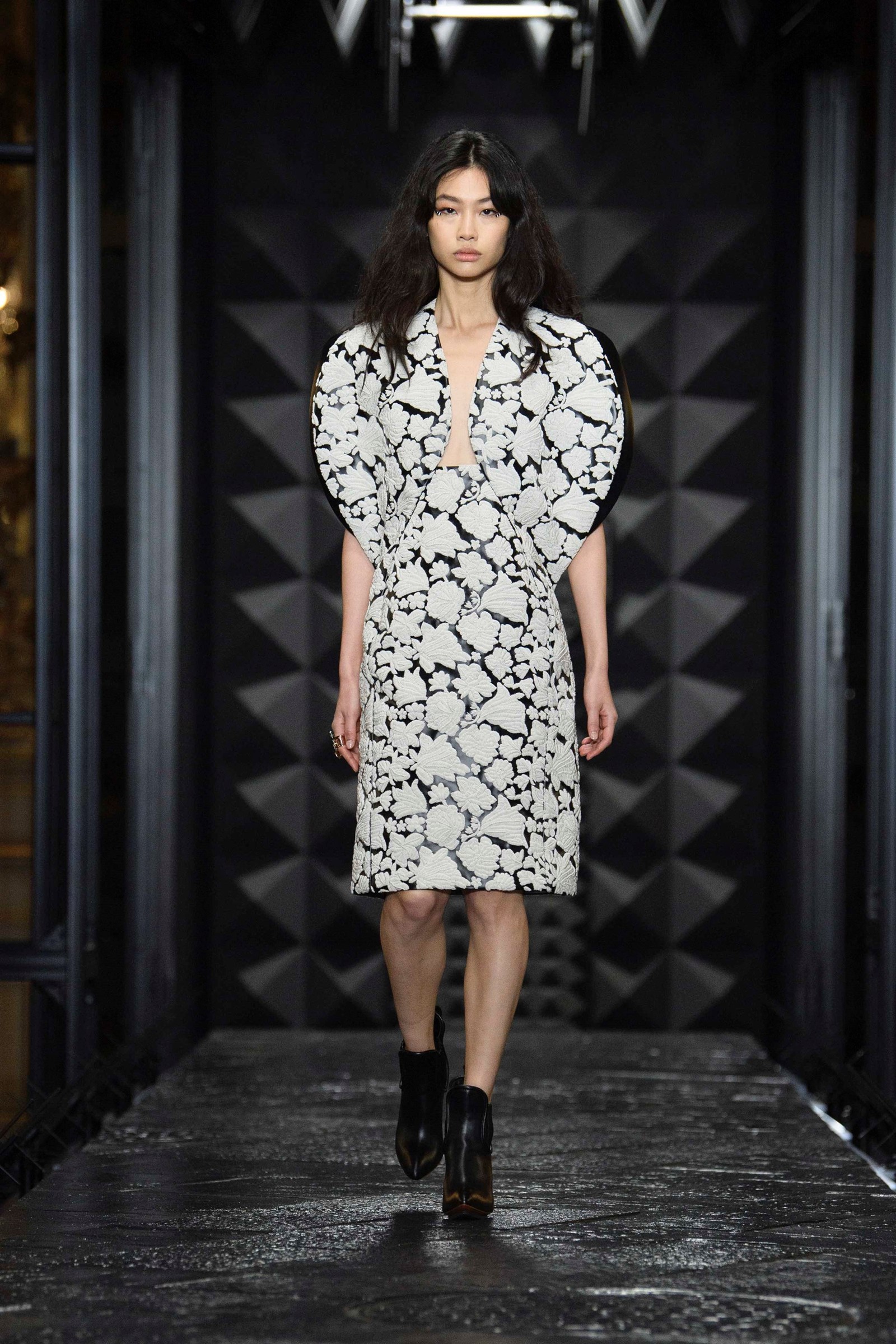
And that was kind of the point of the collection too. Ghesquière recounted that he posed the question “What is French style?” to his studio, comprised as it is of designers from all around the world. In a sense, then, this collection was a touristic view of France, a multiverse of French riffs and references compressed into a single collection, multifaceted and never expected. Because, really, how would you characterise French style? Would you throwback to maletot sweaters and berets, the kind spoofed by Gaultier in the 1980s, embracing and then exploding clichés of Frenchness? Would it be, perhaps, the ineffable chic proposed by Gabrielle Chanel in the 1950s, her narrow jersey suits that, for many, came to represent the absolute pin-neat precision of French style? Or would it, maybe, by Yves Saint Laurent, who dressed that avatar of Gallic elegance, Catherine Deneuve, in silently impeccable clothes for over forty years? It could be his Belle de Jour, his Smoking, his faultless tailored skirt suits.
Ghesquière kind of embraced them all, and more, and more. His summary of it was compelling, wild and free-associating. “Classicism with a twist. Trompe l’oeil suiting that’s draped as if it were wrapped up. Pearl necklaces as dresses. Coats made with fabrics that look like carbon steel … it is a collection made of faux-semblants, or illusions.”
Of course, there’s the idea that French style itself is an illusion – what defines it? Geographic boundaries? And how can you export that? Yet you obviously can, because that is something Vuitton has traded in since its foundation. For me, there was an echo of the idea of Parisienne – Paris itself being synonymous with France when it comes to fashion. The Parisienne was a figure of French modernity established in the 19th century – just as the museum we were watching these clothes in was built – projected as an archetype for women to aspire to. The French writer Octave Uzanne was obsessed with the notion, which marked a convergence of culture and commerce, a woman of urbanity and sophistication synonymous with fashion – indeed, the Parisienne was its embodiment, an icon of metropolitan femininity, and of modernity. She was there, reincarnated and reinvented, at Louis Vuitton.
As an exercise, this show was fascinating precisely because of its transience, the difficulty both these clothes and our minds have in pinning down the style of a nation, at a time when fashion is becoming an ever more global proposition. Classicism with a twist himself seemed eager to eschew limitations and transgress boundaries – leathers were printed and worked to resemble other fabrics, shoes were carved out, bodies were pneumatically inflated, altered through the cut and curvilinear form of the clothes around them. In short, nothing was as it seemed, nothing obvious, nothing defined. Which says something about the world today, perhaps.
